If there’s one thing that can drive fear into the hearts of those who create entertainment, it’s the curse of the sequel. As wonderful as it may be to see something you’ve helped bring to life find huge success, that popularity can then give rise to an incredible amount of anticipation for a follow-up—and that stress has weighed heavily on countless video games, movies, albums, and books that have come in the wake of a popular predecessor.
Such pressure was still looming far out on the horizon for the team at Dontnod Entertainment as they worked on the original Life is Strange. As the follow-up to 2013’s underappreciated Remember Me, Life is Strange was set to be a very different project, one that eschewed the ambitions of a big, action-packed epic for a smaller, more intimate episodic story.
When I recently had the chance to ask Life is Strange co-director Michel Koch about those early days of the game’s development, he told me it was more about playing to the whims of its creators than pleasing fans.
“We were a really small team at the time,” Koch explained. “We had just started to work on this project, which was like a small storytelling game that I would say we wanted to play as players. It was the kind of story we wanted to create, but we had no idea if it would resonate with the players, work as an experience, or find an audience.”
Of course, to both the delight and terror of the team, Life is Strange indeed found an audience—one beyond the studio’s dreams. The tale of a time-travelling teenage girl named Max and her estranged best friend Chloe struck a chord with gamers all around the world, and both the story and its characters quickly became beloved by a wide segment of players.
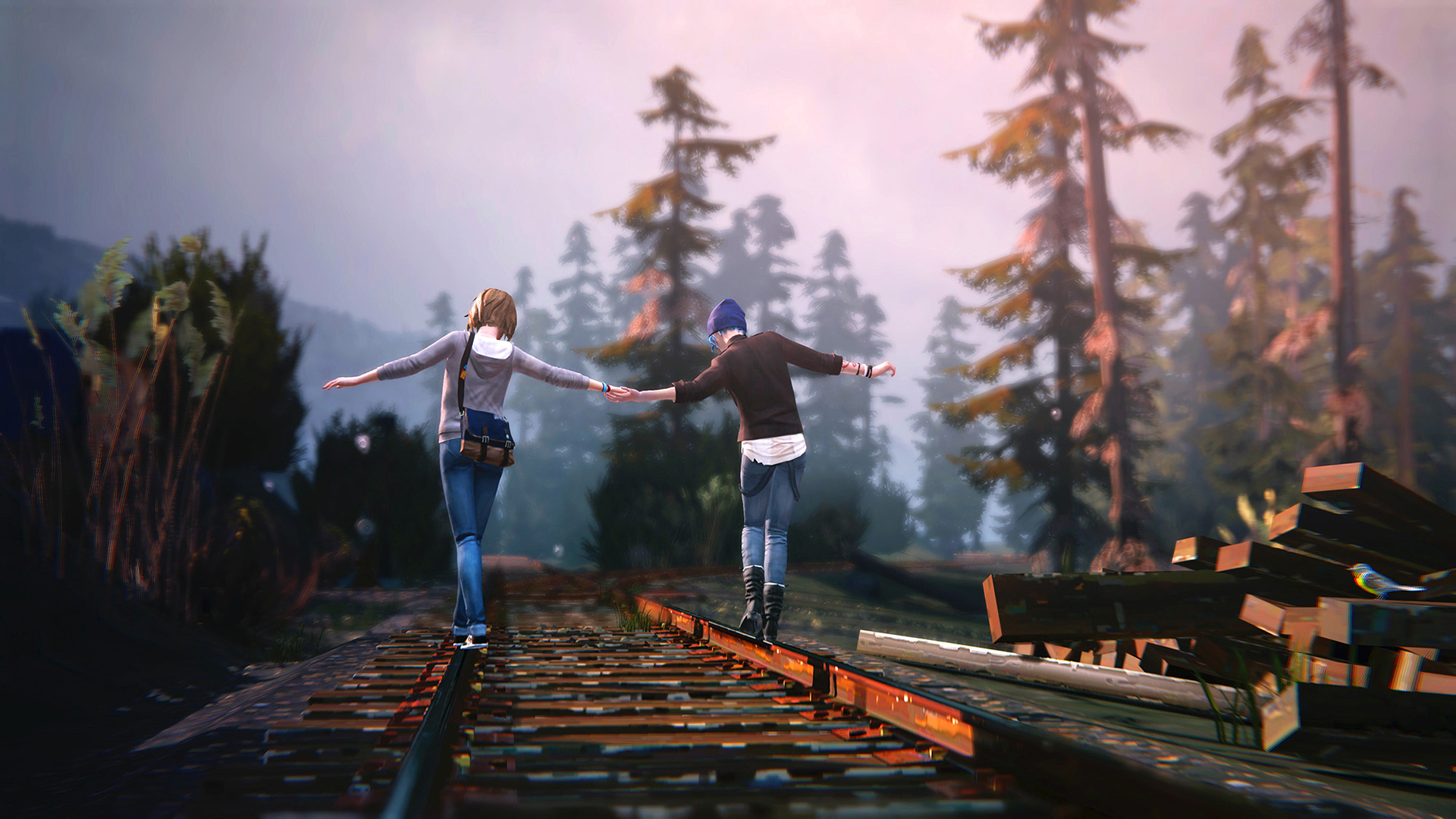
Credit: Square Enix, Dontnod Entertainment
One part of Life is Strange that made it so special was that it not only touched on how hard it can be to be a teenager, but also on some of the more personal challenges people can face during that point in their lives, especially in the modern era.
“We received a lot of letters from players saying that the game helped them to better understand something about themselves, or maybe just accept some issue that they were facing,” Koch said. “Or, even just knowing that someone out there might be living the same thing, that helped them. So, it was really touching for us to read all that, to know that our game could have done that for players. When you create a game, of course we want the players to experience it, but if it then brings something to their lives or helps them in a way, that’s even better.”
As the success of the original Life is Strange grew, so too did those dark clouds on the horizon. With every great review score, piece of fanart, or enthusiastic Let’s Play that hit the internet, the rumblings for a sequel grew a little louder, and the expectations for said sequel rose a little higher.
The folks at Dontnod held initial conversations on the idea of producing a true sequel with publisher Square Enix, and then sat down to come up with some initial ideas on what exactly to do. Koch recalled that one of the questions the team asked itself was a simple—yet potentially complicated—one: What is the DNA of Life is Strange? What exactly was it that the studio wanted to create, what did they want to do in a game, and how would that lead into a design goal for a second title?
One of the big decisions the team came to during those discussions was also one of the most controversial ones that it could make.
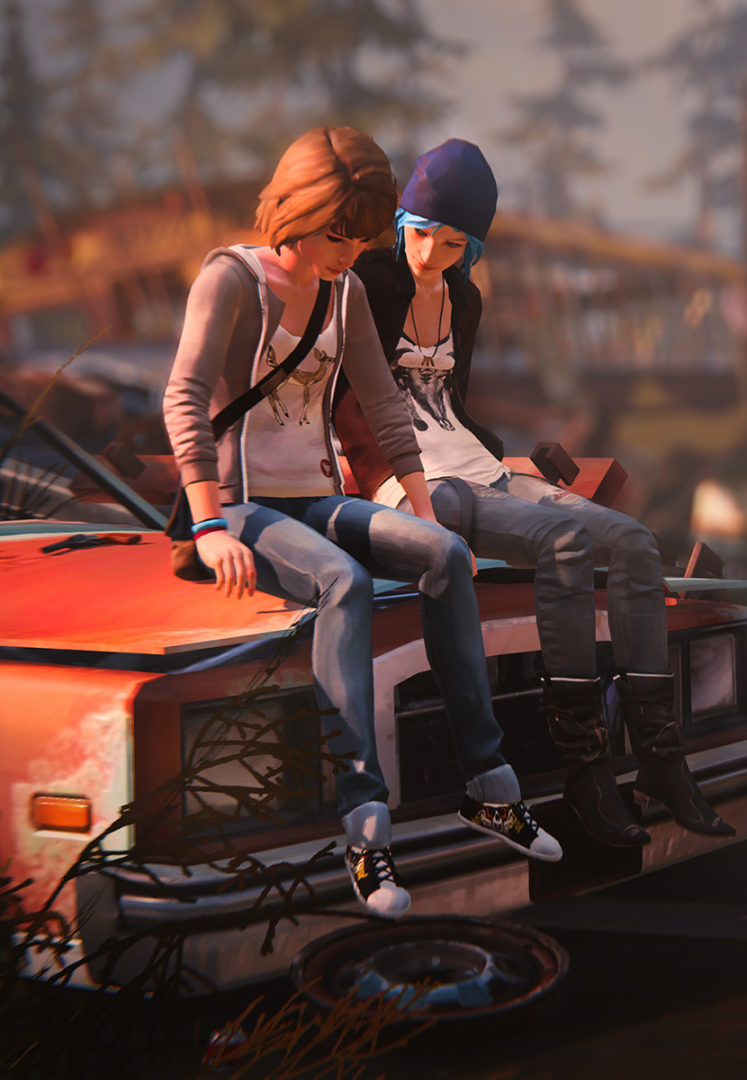
Credit: Square Enix, Dontnod Entertainment
“We realized that, for us, it wasn’t really about the story of Max and Chloe,” Koch said. “It also wasn’t just about rewind powers. It was more about trying to tell a story surrounding relatable characters anchored in reality who will be facing some real-world issues. And, on top of that, with a hint of supernatural elements that we can use as a way to strengthen and put more emphasis on the themes of the story.”
As someone who dearly loves the original Life is Strange, I was legitimately surprised when Dontnod announced that Life is Strange 2 would have nothing to do with the duo. But—I was also happy. Complaints about how the “Bae over Bay” ending didn’t feel as fleshed out as the other potential outcome aside, I felt like we’d seen everything of Max and Chloe’s story that we needed to. In my eyes, dragging them back out for another crazy adventure would have tainted what they’d been through (not to mention the ending I’d chosen), even if that wasn’t an opinion shared by a decent number of other fans in the community.
That split between those who wanted Max and Chloe back and those who wanted the girls’ story to stay finished brought me to one of the questions I’d most wanted to ask Koch during our conversation: if the team had ever thought they’d made a mistake by moving on from the pair.
“There was a lot of anxiety about that, because we knew that some players really just wanted to have Max and Chloe back. Yet, on the opposite side, we knew that we would never be able to give them something that would be satisfying,” he told me. “I mean—by the end of the first game, Max and Chloe, if you ask me, the players have come to own them. They have their own ideas of what would happen next in the lives of the girls. We’ve seen so many fan fictions that are really great, where the players have gone in every direction with Max and Chloe. And we know that if you start to make a direct follow-up that sets their future in stone, you are making tons of players unhappy, because it’s not what they want.”
I had expected that I might hear of some point in the development process of Life is Strange 2 when the studio suddenly panicked about leaving Max and Chloe behind, but I didn’t feel any wavering in Koch’s answer as he continued on. He told me that the team definitely wanted to drop some hints about how the pair’s lives might have turned out, and those who have played through all of the sequel’s chapters may have indeed come across those hints. Still, what we got was just that: hints. Koch told me it was important to find a balance in what the developer did, something that could give that connection for those players who needed it, while also giving other players a lot of space to imagine how Max and Chloe’s lives might now be.
There was one part of that decision that did continue to frighten the team, however. Would players be able to put Max and Chloe aside for long enough to care just as much for the new main characters, Sean and Daniel Diaz?
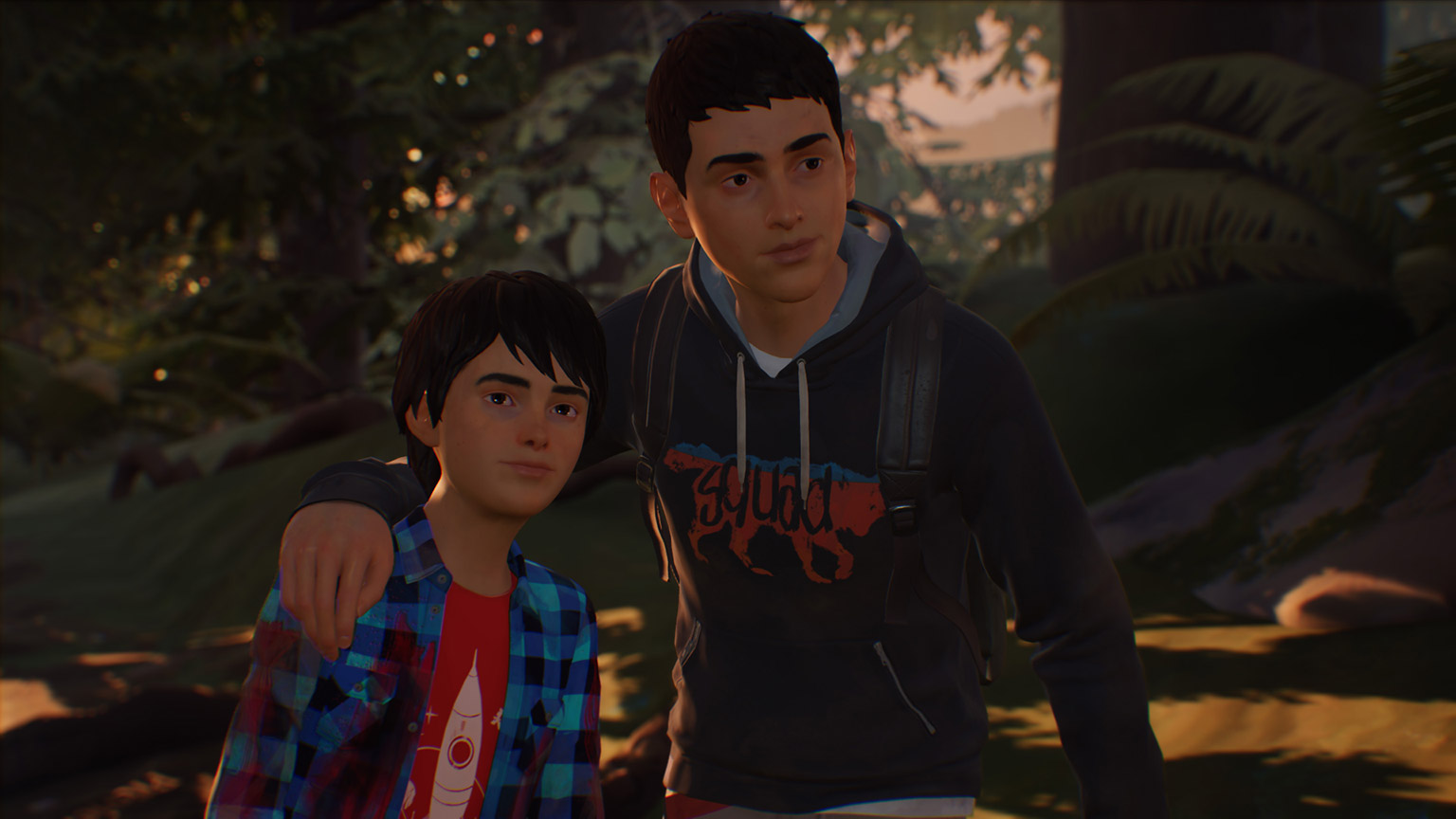
Credit: Square Enix, Dontnod Entertainment
It’s an understatement to say that the Diaz brothers had big shoes to fill, especially given that the side project created to tide fans over until Life is Strange 2 kicked off—Deck Nine’s Life is Strange: Beyond the Storm—only gave fans more of the characters and locations they’d come to love in the original game. Breaking away from Arcadia Bay and its inhabitants was something Dontnod definitely wanted, but doing so would mean asking players to invest in a whole new set of characters. Still, Koch explained that it was something the team had to figure out how to do, so that their drive to tell a new story and bring a new point of view to players could be successful.
With everything that stood in the way of Life is Strange 2 being a success, part of me wondered if there was an even bigger hurdle that needed crossing beyond moving on from Max and Chloe. The original Life is Strange was about those two, sure, but it was also about crafting a game based around “choice and consequence” (as Koch would put it) that was unlike anything else out there.
As I talked about in my review of the game, Max’s ability in Life is Strange to rewind time and rethink her decisions was absolutely brilliant. At first, you might expect getting a do-over when it comes to making an important choice to take away all threat of making a mistake, but Life is Strange was sneaky in that it never really let you know which choice was the right one until much later—if there was even a “right one” at all. Having the freedom to change a decision I’d just made ended up making those decisions even more stressful and terrifying, as I’d second- and third- and fourth-guess myself in a way that never came from other games and their “once and done” decision-making.
There’s no doubt going back to a much more traditional approach brought added risks.
“It’s something we talked a lot about together,” Koch said. “We loved the rewind mechanic because, you’re right, it was a completely different way to approach a ‘choice and consequence’ game. It was something that worked really well. But, we also like to create our powers and gameplay mechanics based on the story of our character—and the ability to rewind was completely linked to the story of Max.”
Koch emphasized that Max’s powers tied into who she was as a person: an “insecure teenager that has a lot of issues before her in her life.” Her shy, indecisive nature mixed together with her inability to move on with certain events from her past, all of which fed into her desire to both have more control over her present, and also the chance to potentially change her past. So, as big of a part of Life is Strange as that rewind power was, it was Max’s power, something tied to her and her alone.
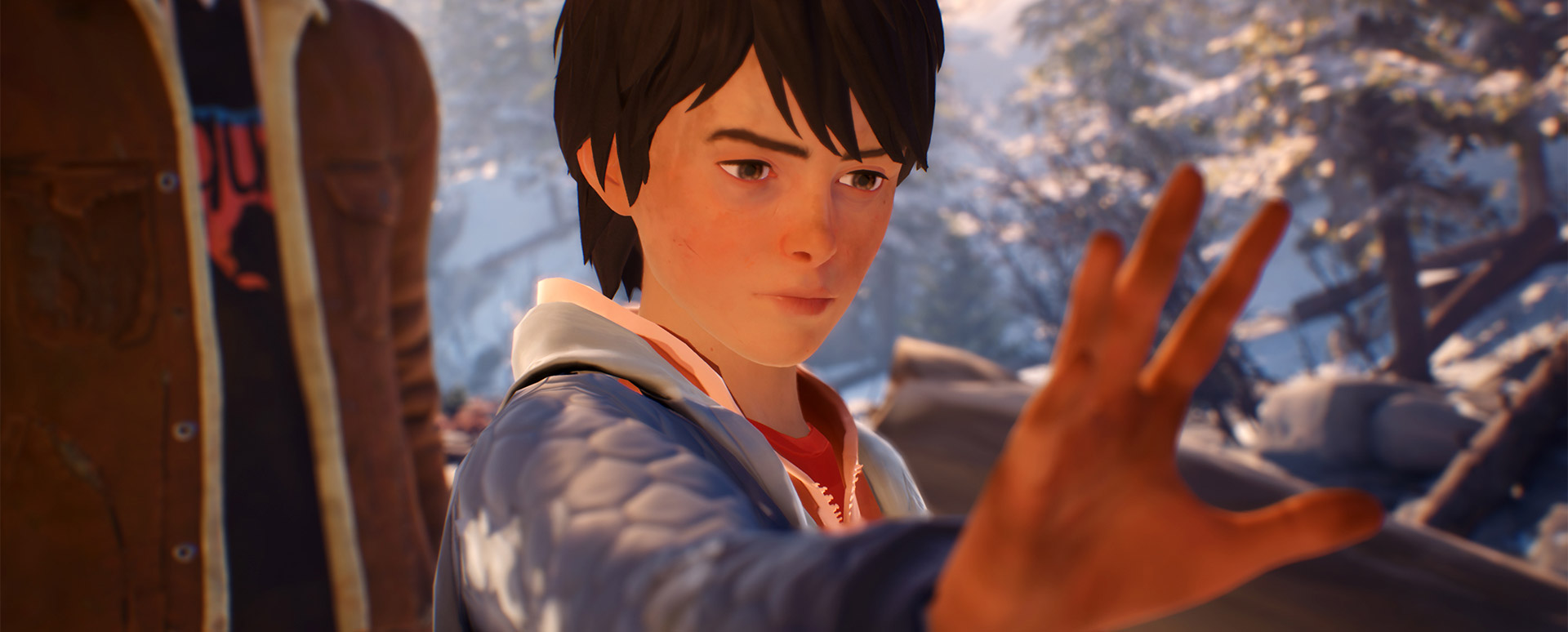
Credit: Square Enix, Dontnod Entertainment
In that same way, Daniel’s telekinetic abilities in Life is Strange 2 center around one of the key themes of the story: education. The team at Dontnod wanted the sequel to push players into a position of having to help teach and guide a secondary character, and the rewind power just wasn’t working for that idea. As opposed to the original’s bigger, more meaningful choices, Life is Strange 2 was instead poised as an aggregation of a lot of smaller choices, each of which might nudge Daniel in a number of different directions.
“So, it was a sort of compromise that we made, accepting that we would lose that more unique gameplay mechanic,” Koch admitted. “But, we would change it to a fun and interesting new choice mechanic, where instead of making polarizing important choices for your main character, you’d have a lot of smaller choices, dialogue options, and ethical decisions that you are showing to your brother, which all help to shape him over the course of the game.”
All of that, of course, speaks to another of the big ways in which Life is Strange 2 deviated from fan expectations:his time, you’re not actually controlling as the character with powers.
I had somehow gone into Life is Strange 2 with no knowledge of that shift. When I discovered that older brother Sean—the protagonist no special abilities of his own, and that it was only his younger brother Daniel with powers, it came as something of a shock. At first, it’s easy to feel a bit let down by that situation, especially after the rush that had come from playing as Max. The deeper I got into the game’s episodes, however, the more Dontnod’s theme of “education” began to make sense. It’s one thing to control a character who can do superhuman things—it’s another to stand by and watch someone else either use or abuse such abilities depending on how you’ve treated them.
That separation of the player from the power didn’t come instantly, though. Koch told me that the studio knew it wanted to tell a story about brotherhood, and family as a whole, but that the decision to make the non-playable Daniel special came shortly after. Once those deeper ideas of how power should be distributed among the game’s characters started to form, they definitely proved interesting.
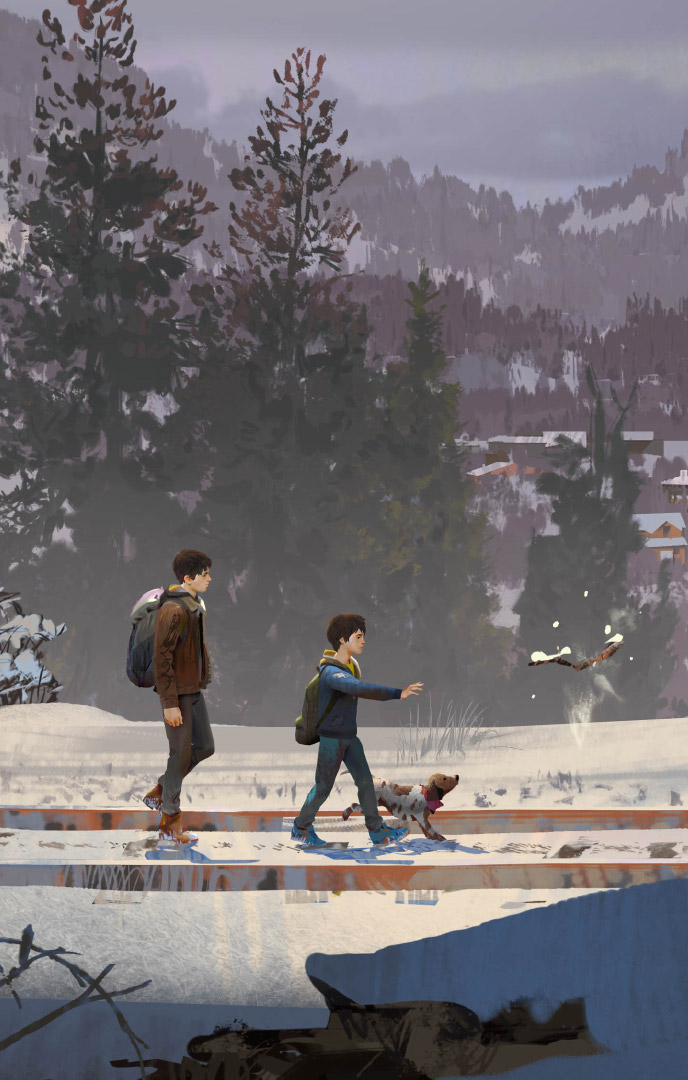
Credit: Square Enix, Dontnod Entertainment
“Educating a kid is already really complicated,” Koch said, laughing. “But, if this kid has a superpower, and can become really violent or really angry, it causes much more anxiety to you as a player. You have to make sure that you’re trying to raise this kid in the right way, because he’s powerful. And, as a secondary subtext in the game, we also ended up talking a lot about characters that are facing oppression, and who are somehow powerless. So, it was interesting to have the main character himself be powerless in his own way, at least in a gameplay sense.”
My conversation with Koch had come not too long after I’d played the final episode of Life is Strange 2, and after seeing the sequel play out in its entirety, there was still one thing that I really wanted to know about its journey. After all of the pressure, all of the expectations, the worry over if fans would accept Sean and Daniel, the rocky release schedule, and everything else—how did he, and the team, think Life is Strange 2 turned out in the end?
“That’s a really good question, one that I’m not sure I’ve thought about,” Koch said with a chuckle. Letting his guard down a little, he admitted that the game may have been too ambitious at times, both in its length and in the events that happened with the brothers. Unlike the original’s consistent two months between chapters, Life is Strange 2’s episodes took far longer to arrive, and when they did, the wait between them wasn’t always even. Koch explained that the game’s content simply took far longer to create than the team had originally expected, and that the side effect of an extended schedule was that players had a harder time staying invested in the characters and their stories. He also talked about how he wished there had been more time to develop some of the secondary elements, such as Lisbeth and her cult, who ended up feeling a bit too one-dimensional without a deeper look into how she truly cared about the people in her community.
Still, while there may have been pieces of Life is Strange 2 that could have been better at the end of the day, the game turned out to be something the team can take pride in when viewed as a full experience.
“Looking at the reception of the players and the press with the final episode, and now the season as a whole, I think I’m really proud of the journey, as well as its end,” Koch said. “I think that we see that players are really—I wouldn’t say happy, because it’s not really a good word—accepting and content with the endings they’re getting. Looking at the reactions of most of our players, they understand now that it’s all their journey, all their choices with Daniel that shape their ending.”
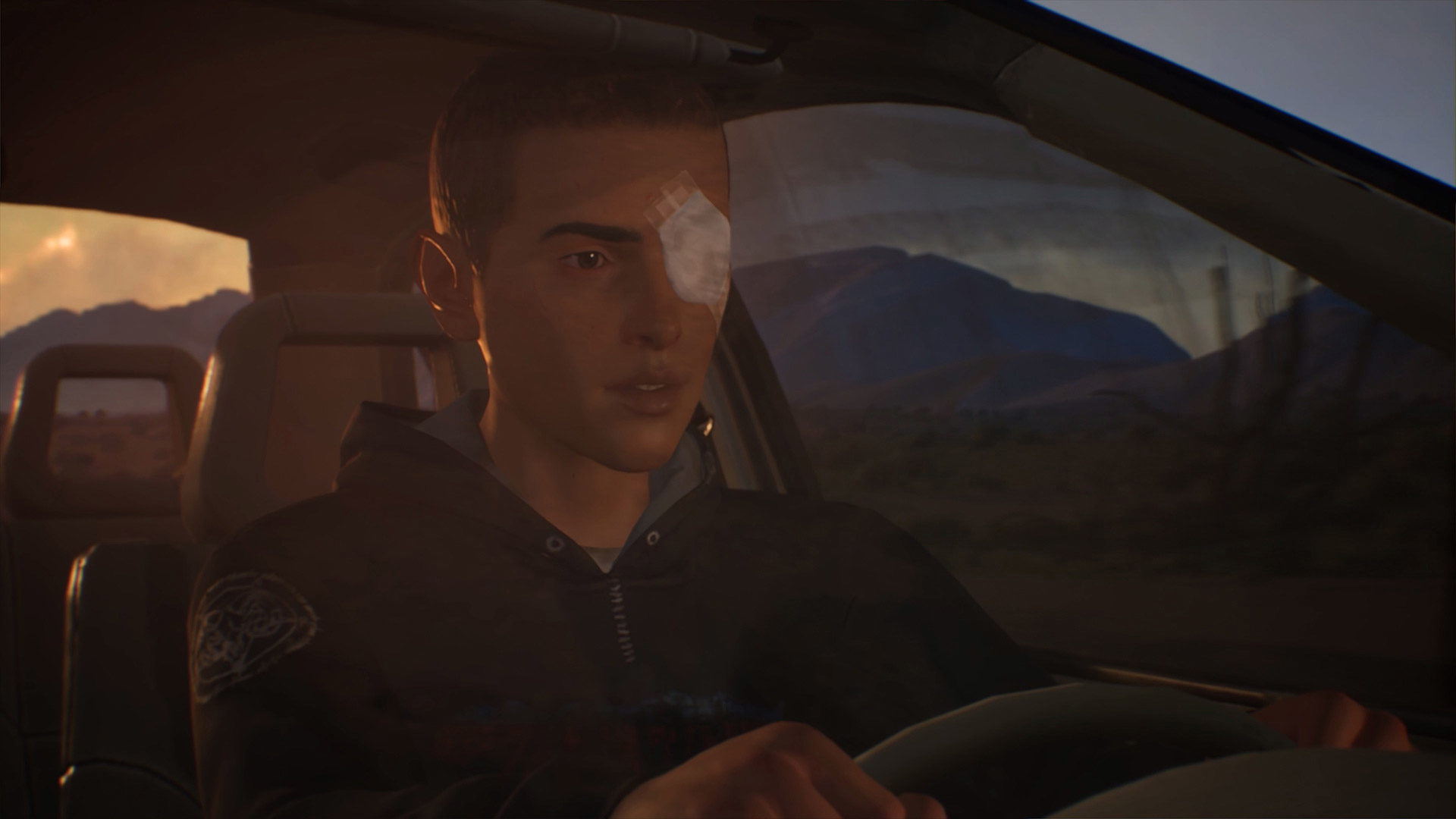
Credit: Square Enix, Dontnod Entertainment
Indeed, one of the biggest answers to fan complaints following the original Life is Strange was giving players a game with endings that were not only more fleshed out, but also more personalized to the experience. As our conversation neared its end, Koch talked about how the team had managed to make four endings that were neither black nor white, where instead of “good” or “bad” resolutions, players instead would find endings that reflected their choices, especially surrounding how they had dealt with Daniel.
“That was very important for us—to show that there couldn’t in any way be a perfect solution for Sean and Daniel, because that’s not how things work in life,” Koch said wistfully. “You have no free get out of jail card when facing our society.”

Mollie got her start in games media via the crazy world of gaming fanzines, and now works at EGM with the goal of covering all of the weird Japanese and niche releases that nobody else on staff cares about. She’s active in the gaming community on a personal level, and an outspoken voice on topics such as equality in gaming, consumer rights, and good UI. Check her out on Bluesky and Mastodon.